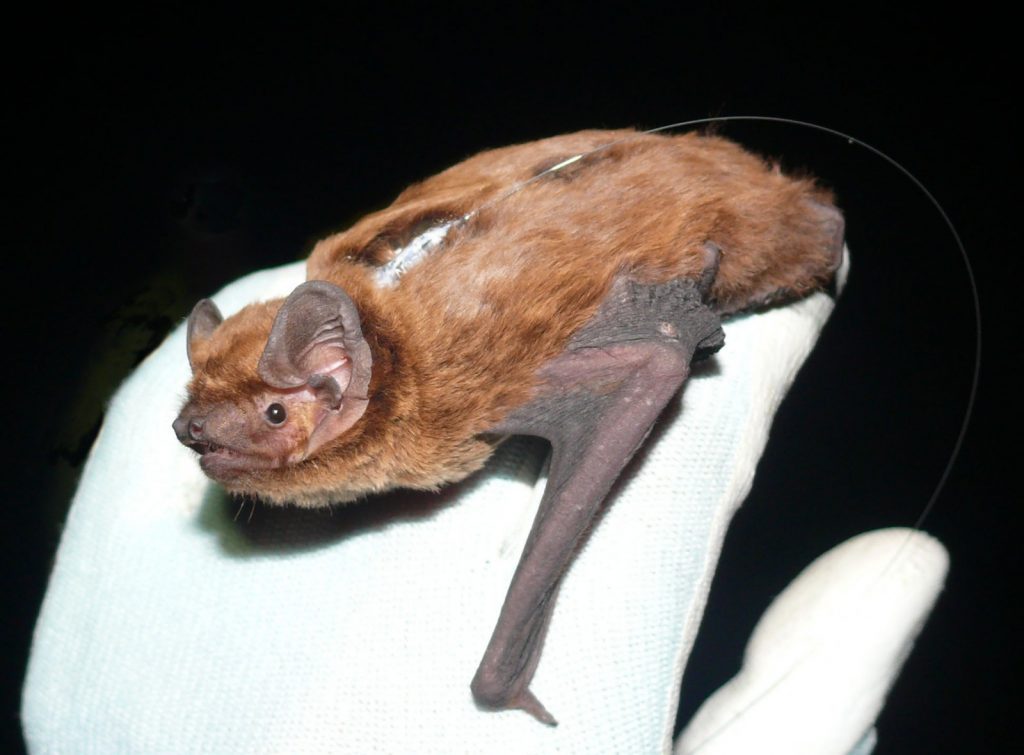Galloway Forest Park is the home to Scotland’s second confirmed maternity roost for the rare Leisler’s Bat.

A maternity roost is the name given to a grouping of female bats which come together in a location in late summer to have their pups.
Although widely distributed throughout the British Isles, the Leisler’s bat is not common, especially in Scotland, and to find maternity roosts is very rare.
The first ever recorded find of a maternity roost was in Culzean Country Park back in 2012 where 40 adult females were found. Galloway’s roost has at least 27 adult females.
The finding of such a maternity roost is a good sign that Galloway’s plantation forests are playing an important part in allowing this rare bat to flourish.
Gareth Ventress, Environment Forester with Forest Enterprise Scotland said:
“Since 2010, a group of bat experts and volunteers have been trying to find out more about the rare Leisler’s Bat in Scotland.
“At first we knew that bat boxes on the National Forest Estate were being used by Lesisler’s bats in the Cree Valley and Glentrool area of Galloway. Unfortunately there was no evidence of breeding at all.
“Over the next few years, research continued but it proved difficult to find any signs of breeding. In 2016 we did find a juvenile male Leisler’s in Galloway which confirmed that there must be a roost nearby.
“The team decided to come back again this July and were successful in finding lactating Leisler’s bats with the help of sonic lures and specialist bat nets. We radio-tagged three adult female bats and were able to track them to their maternity roosts.
“We’re really pleased that our forests are providing a safe haven for this wonderful and rare bat.”
The Leisler’s is a mid-sized bat around 5-7cm long with a wingspan of between 26-32 cm and is one of just 10 bat species found in Scotland, all of which can be found in Galloway Forest, including the only known Scottish Brandt’s bat roost.
In Galloway the bat is found in several locations using bat boxes. The males will fly around a roost slowly calling females to join his harem which can contain up to nine females.





